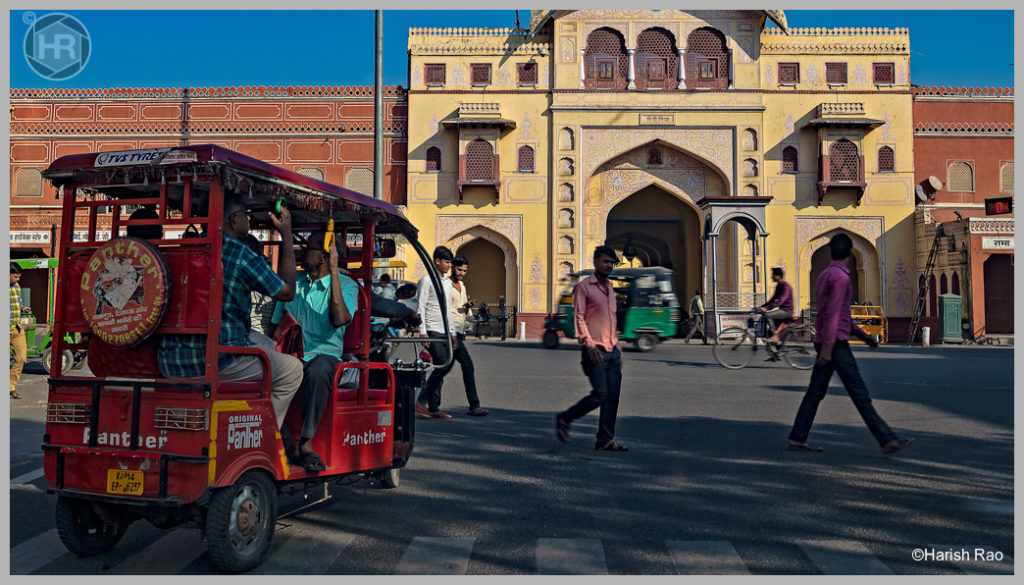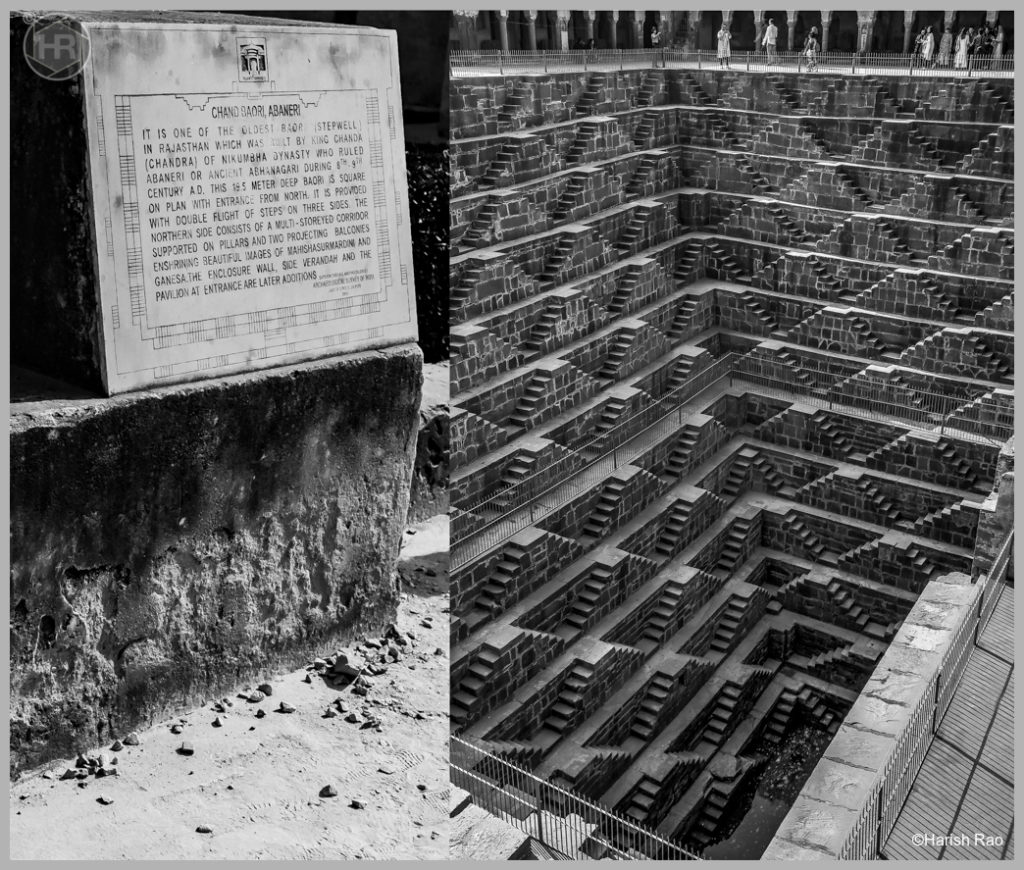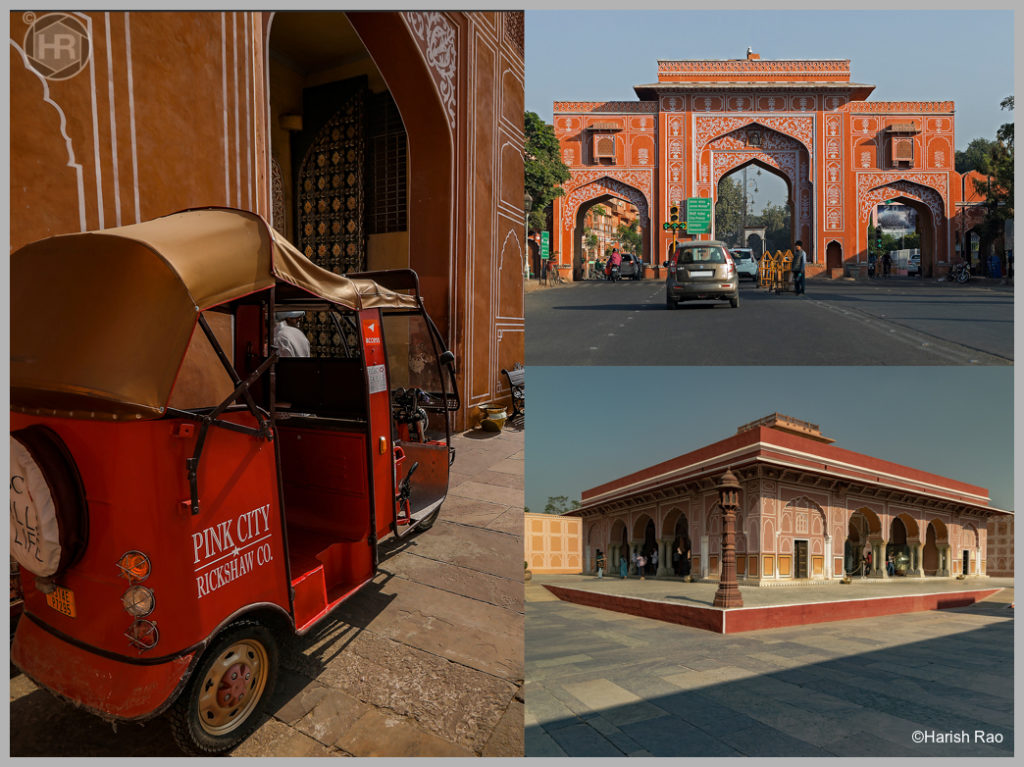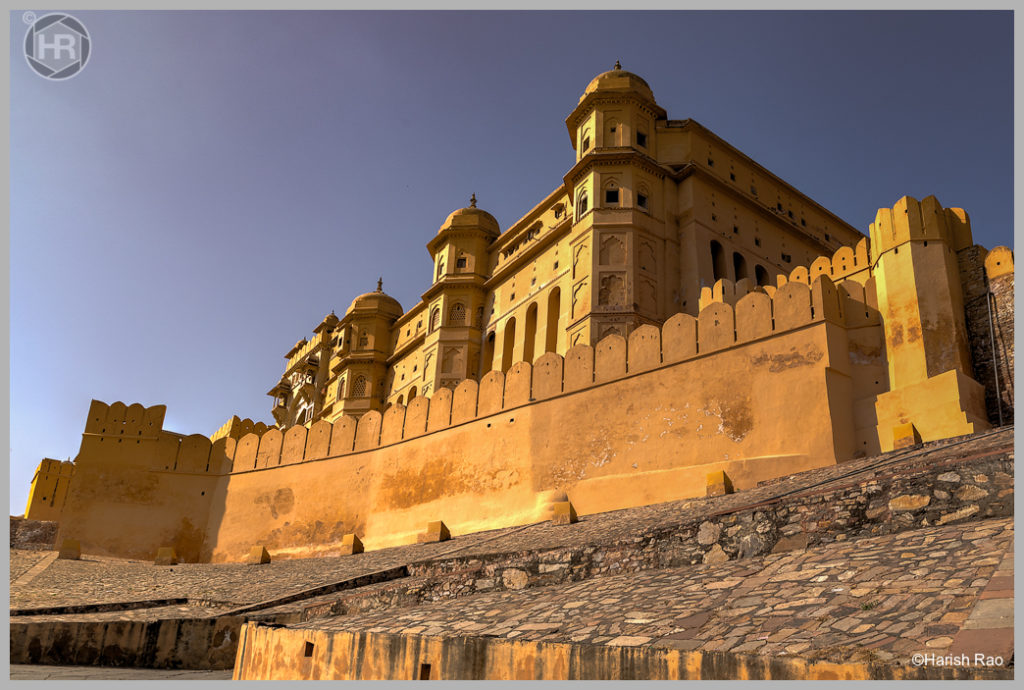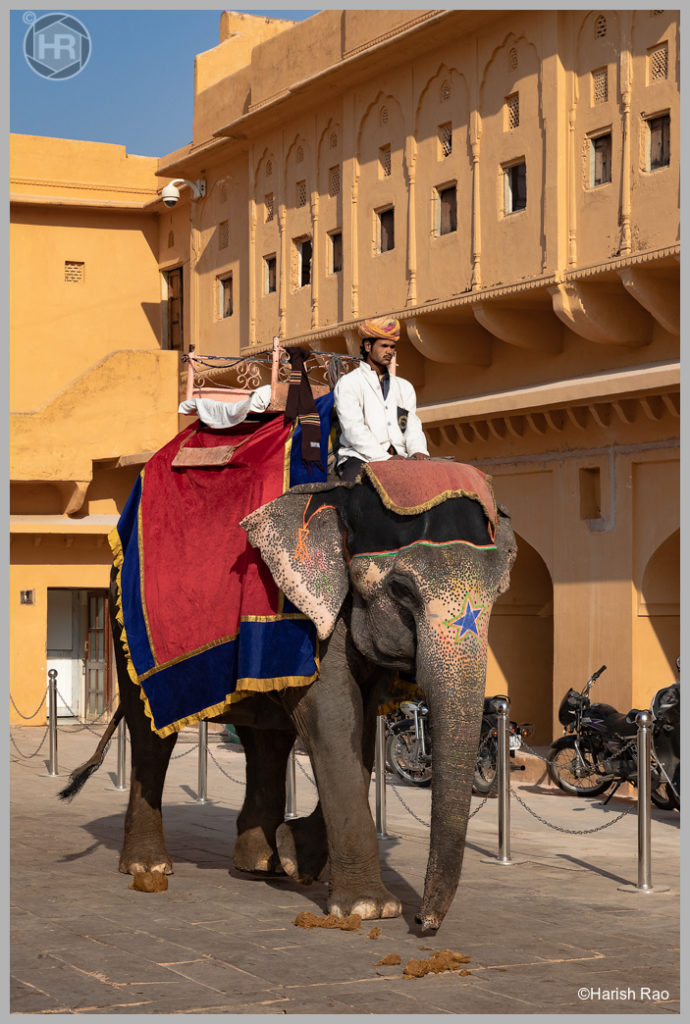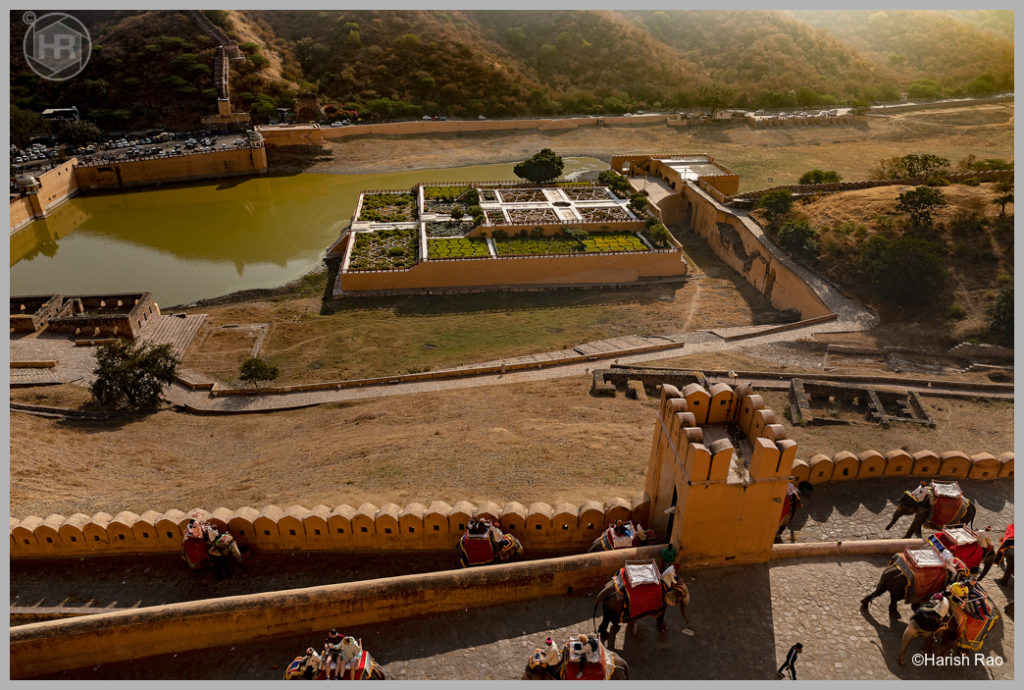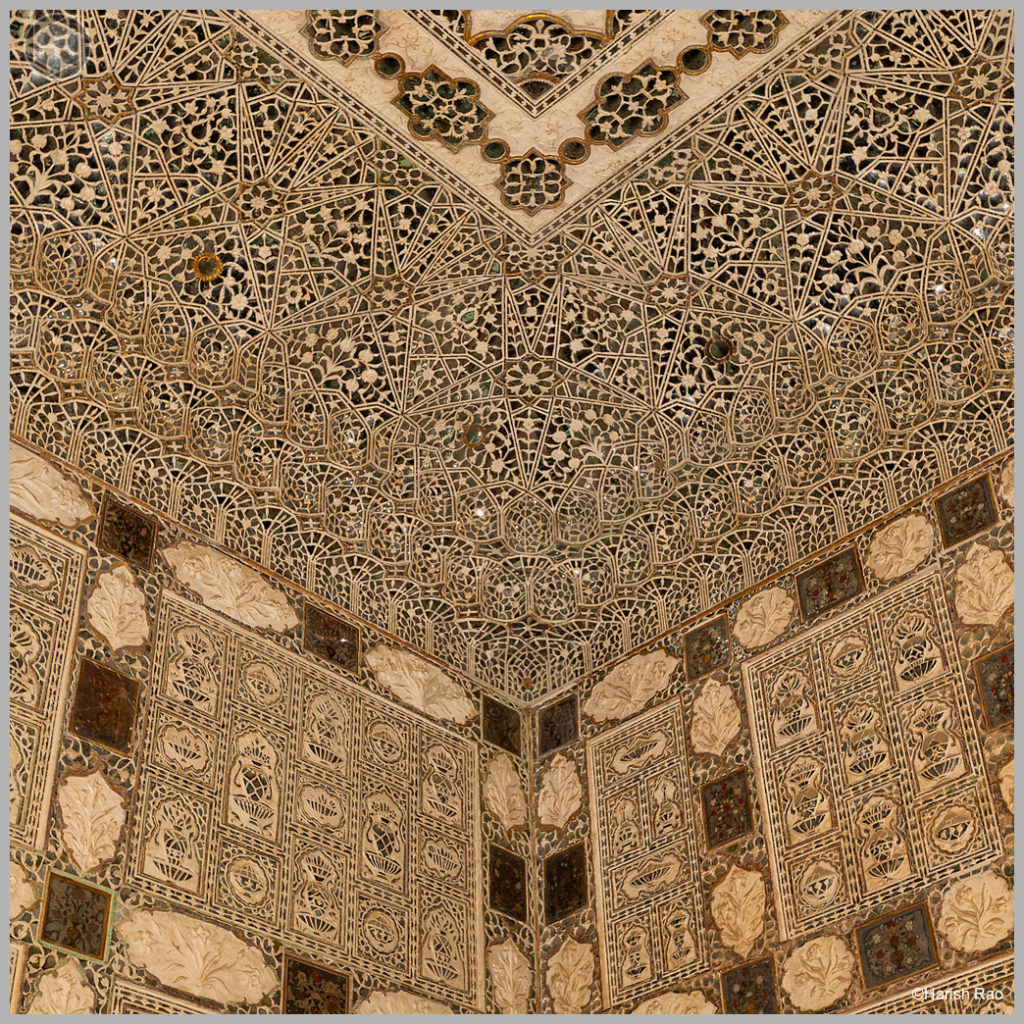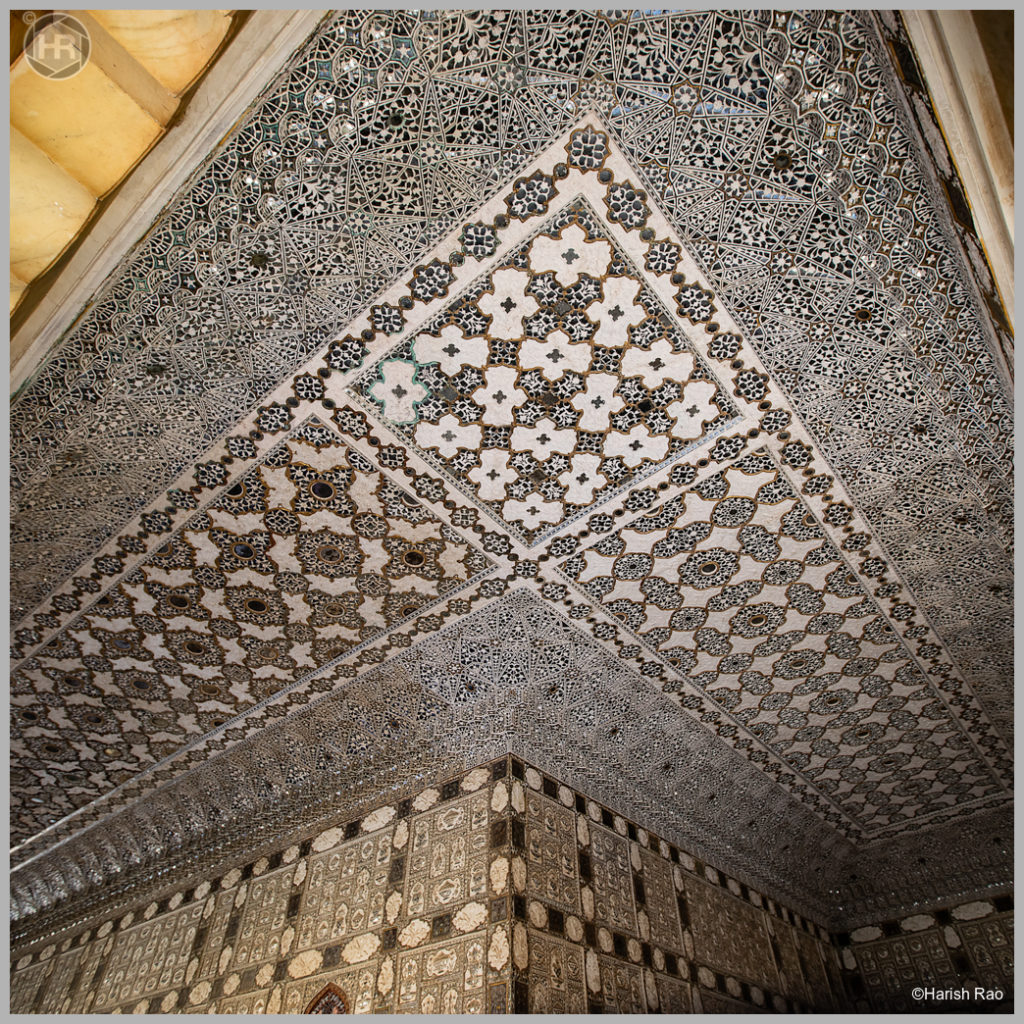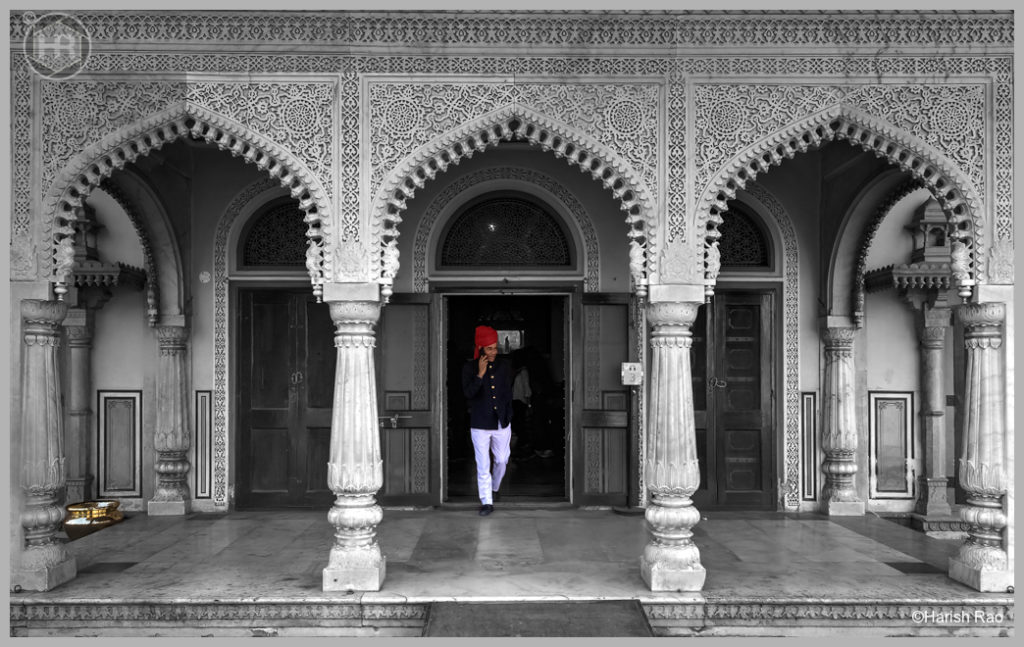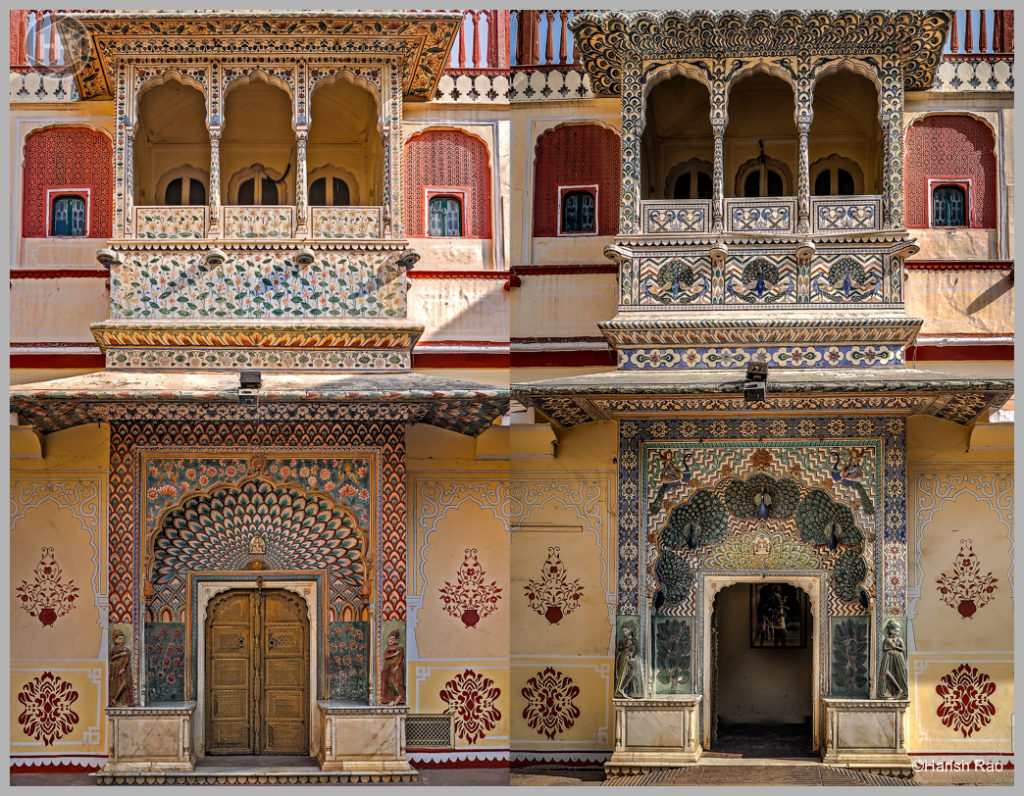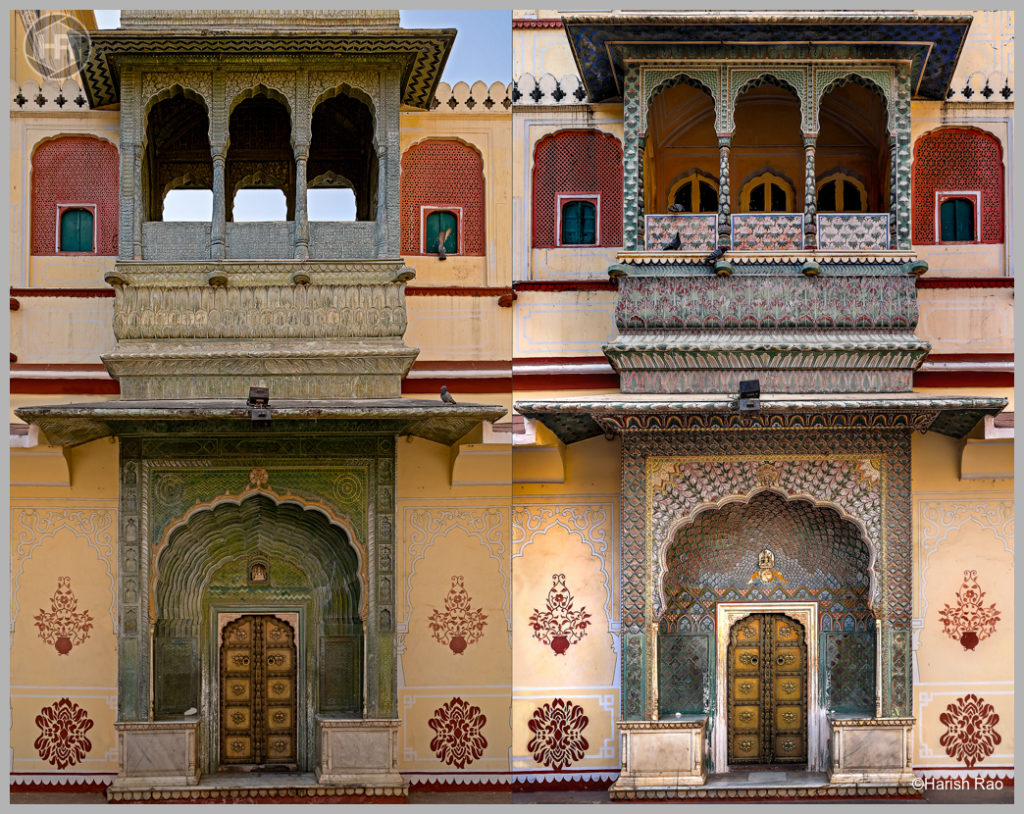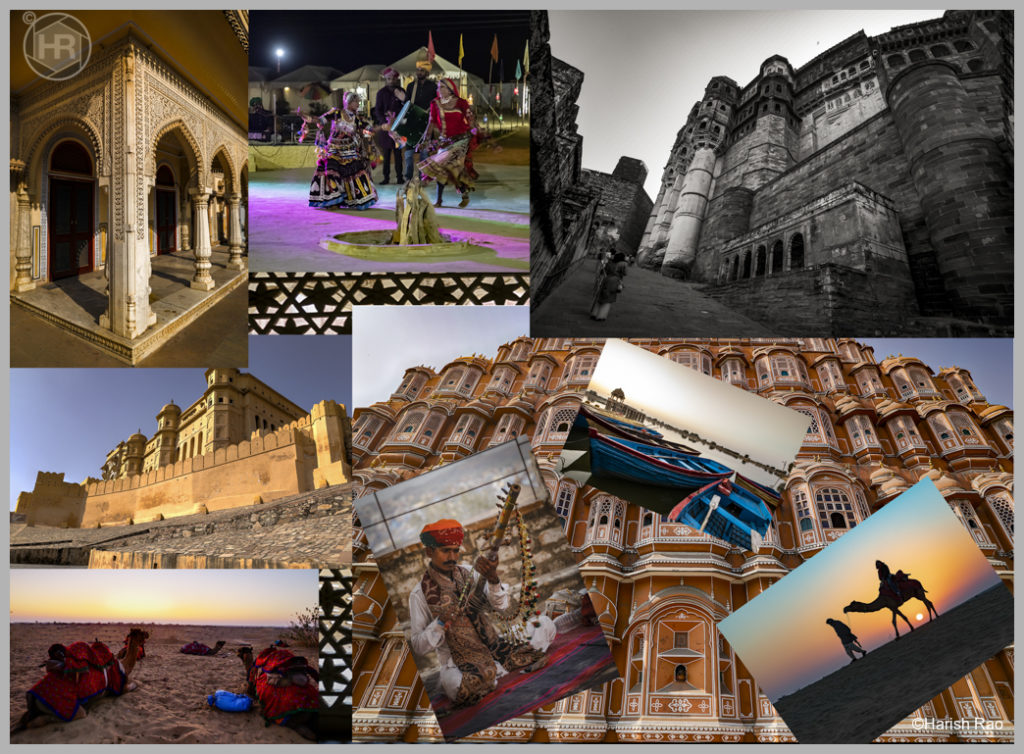Jaipur - The Pink City
Jaipur - The Pink City
Jaipur - The Pink City
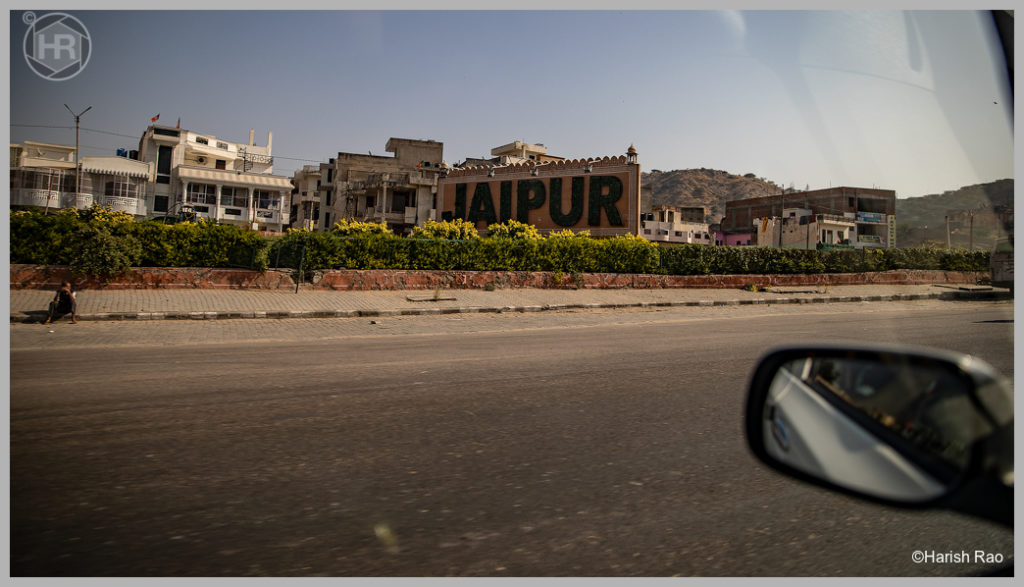
Entering Jaipur the final leg of our trip - from Jodhpur via Pushkar and Ajmer.
Jaipur widely known as “Pinkcity” is the state capital and natural gateway to the Rajasthan, situated in eastern part of Rajasthan and forms a part the “Golden Triangle Tourist Circuit“. It is described to be bustling Capital city with trapping of modern metropolis but still its natural splendour and alluring beauty which never fails to surprise an explorer.
Jaipur has a bit of everything, from the wonders of its many historic forts and palaces, to the rich vibrancy of local culture and bustling energy in its vivid bazaars. The wide range of forts and monuments having exquisite mix of Rajasthani, Mughal artistry and flairs make people feel proud to be part of Jaipur.
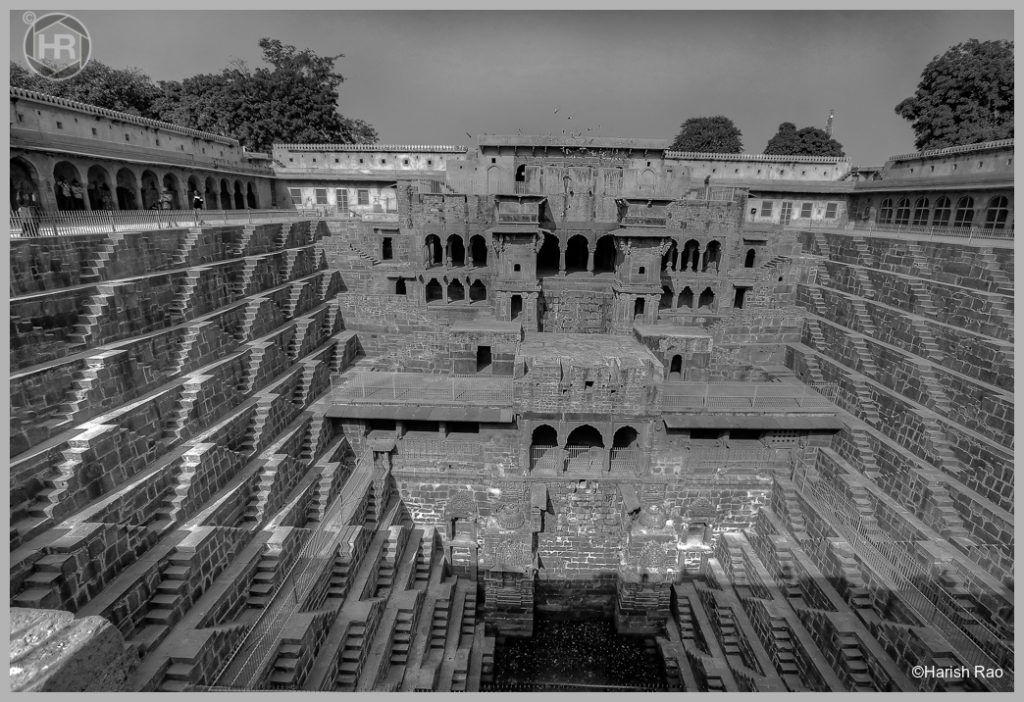
The step well at Abhaneri. I wish there was a Rajasthani going down the stairs in regional attire !
The Chand Baori is a stepwell built over a thousand years ago in the Abhaneri village of Rajasthan. It is one of the largest stepwells in the world and also one of the most beautiful ones. Located in the eastern part of the province of Rajasthan, it was built by King Chanda somewhere in the 9th century. Stepwells, also called bawdi or baori, are unique to this nation. Centuries ago, the stepwells were built in the arid zones of Rajasthan to provide water all year through.
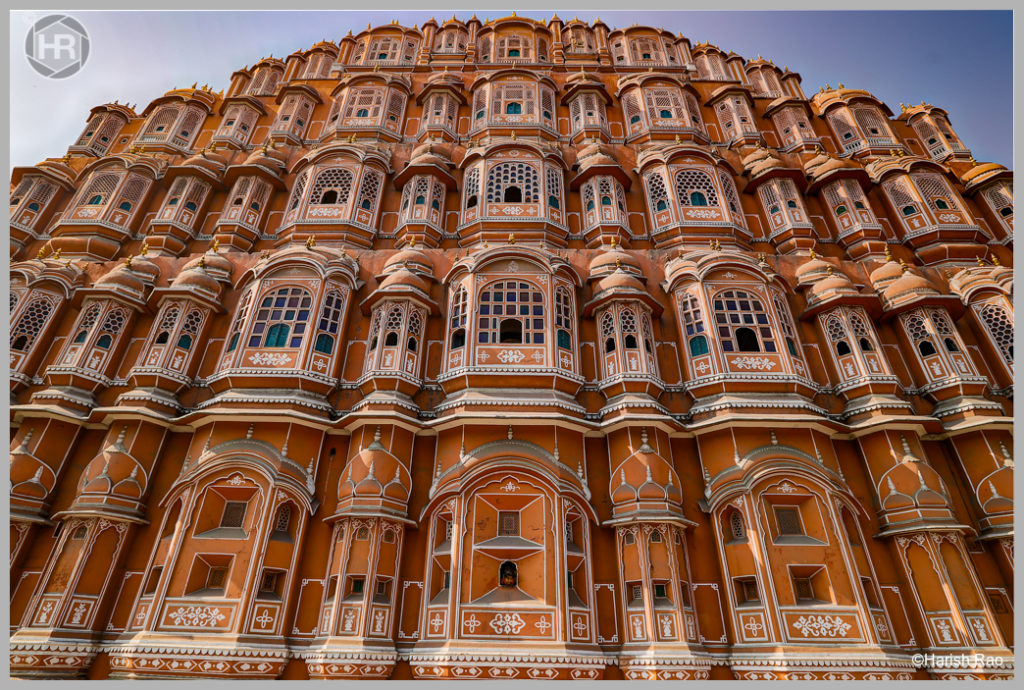
Jaipur's icon - The Hawa Mahal
Situated at Badi Choupad, Pink City of Jaipur, Hawa Mahal was built in 1799. It has 953 windows on the outside walls. The honeycomb shaped and beautifully carved windows allow breeze to blow through the palace and makes it a perfect summer palace. The top three storeys are a single room thick, namely Vichitra Mandir, Prakash Mandir and Hawa Mandir. While the Prakash Mandir provides an open terrace to both sides. Worth noting is that there are no steps to the upper floors but ramps. They are for the palanquin of the royal ladies
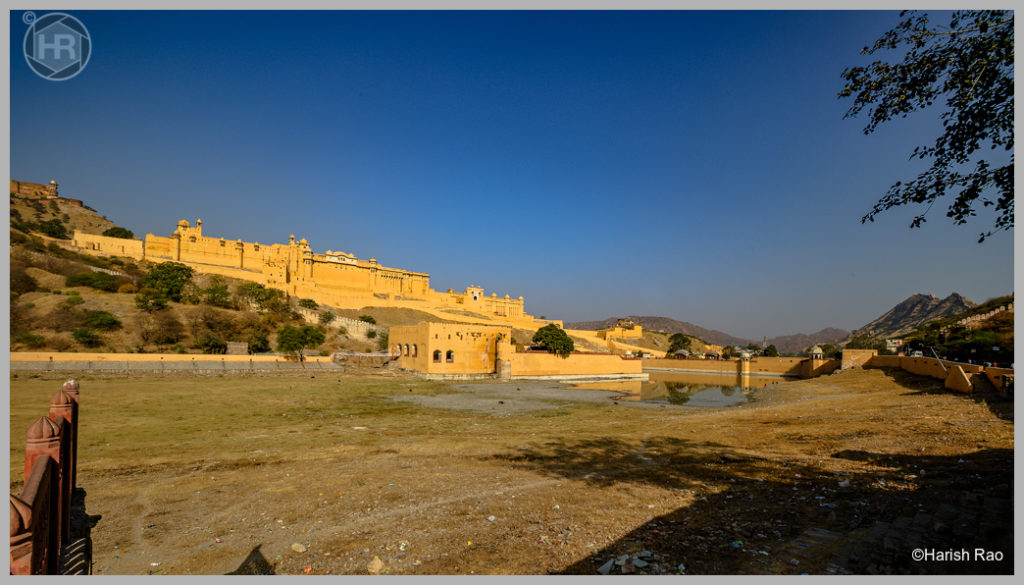
The Amer Fort , another icon of Jaipur
The Amer Fort, situated in Amber, 11 kilometers from Jaipur. Amer, originally, was the capital of the state before Jaipur. It is an old fort, built in 1592 by Raja Man Singh. The Amer Fort was built in red sandstone and marble and the Maotha Lake adds a certain charm to the entire Fort. Though the fort is quite old and may even look so from the outside, it is beautiful on the inside and boasts of various buildings of prominence like the 'Diwan-i-Aam', the 'Sheesh Mahal' and the 'Sukh Mahal'.
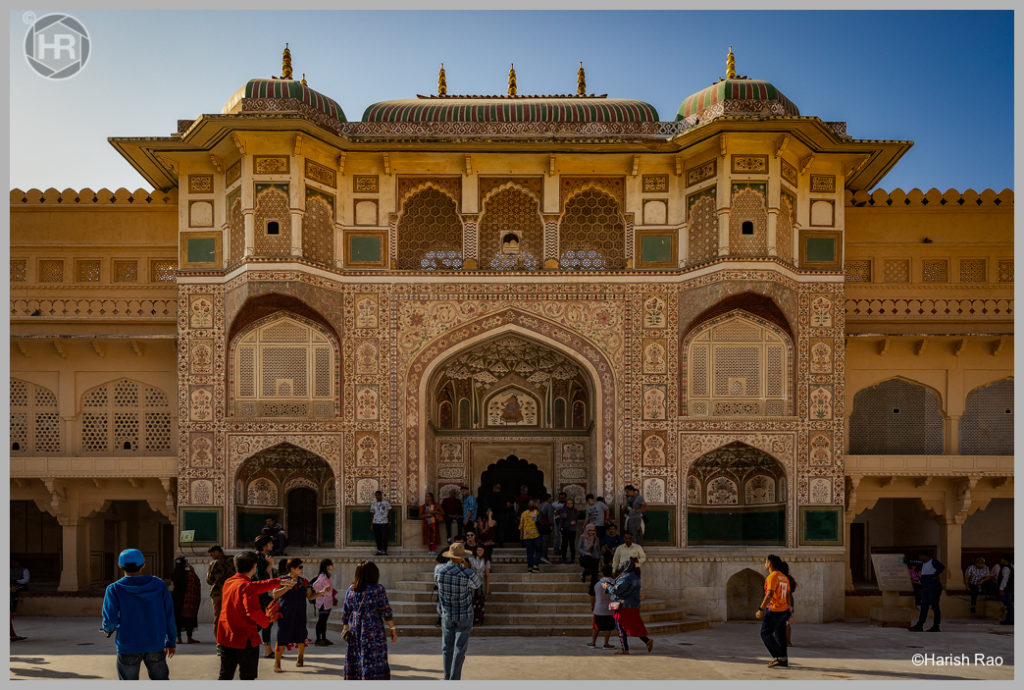
Ganesh Pol, Pol is door...The gorgeous entrance into the fort
Ganesh Pol is in the south side of the courtyard of the palace in the Amber Fort. It was built in the honor of Mughal Emperors under whom the Maharajas of Jaipur served in their army. Ganesh Pol has an alluring image of elephant headed god. It is build in the architectural style of kingdom and Lord Ganesha(elephant God) is in the middle of the long arch. And the interesting fact is that Lord Ganesha is not put in the traditional style but in the profile. This depicts the viewer about the Hindu traditions rather than depicting the real god. It is one of the seven gates of Amber Fort and it was built between 1611 and 1667. This gate of Amber Fort is a royal mix of Mughal and Rajput architectural styles.
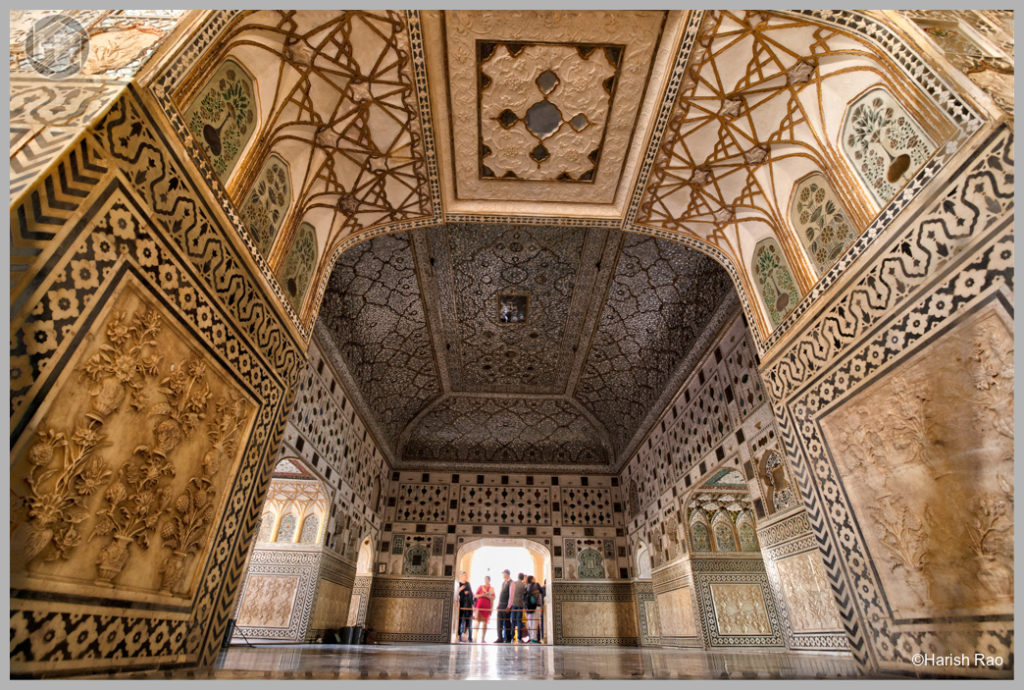
The Hall of Victory
Jai Mandir, also known as “The Hall of Victory”. It is double floored and covered with white marble pavilion which overlooks the courtyard garden , The Aram Bagh. It was built by Jai Singh I in the 17th century and is divided in three parts: the Diwan-i-Khas (Hall of the Private Audience) on the ground floor, a hall named Sheesh Mahal (Glass Palace) adjacent to Diwan-i-Khas, and the Jas Mandir (Hall of Glory) on the upper floor. The interior of Jai Mandir is well decorated. All the walls and roofs of the three parts are covered with small mirror pieces and also with white marbles. Secret meetings of Maharajas were held in these three parts. The lower portion of Jai Mandir is Glass Palace or “Sheesh Mahal”. This is the private lining area of the male members of the royal family and court. The sides of the interior walls are decorated with glass pieces and floral petals
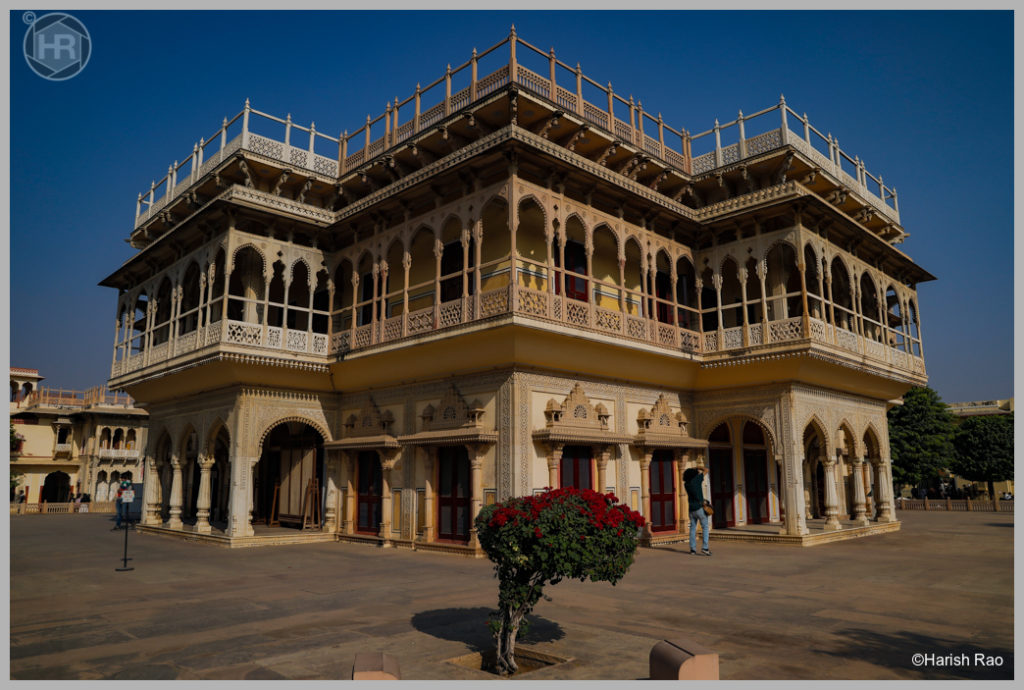
The internal buildings of city palace.
City Palace, which includes the Chandra Mahal and Mubarak Mahal palaces and other buildings, is a palace complex in Jaipur. It was the seat of the Maharaja of Jaipur, the head of the Kachwaha Rajput clan. The Chandra Mahal palace now houses a museum, but the greatest part of it is still a royal residence. The palace complex, located northeast of the centre of the grid-patterned Jaipur city, incorporates an impressive and vast array of courtyards, gardens and buildings. The palace was built between 1729 and 1732, initially by Sawai Jai Singh II, the ruler of Amber. He planned and built the outer walls, and later additions were made by successive rulers continuing up to the 20th century. The credit for the urban layout of the city and its structures is attributed to two architects namely, Vidyadhar Bhattacharya, the chief architect in the royal court and Sir Samuel Swinton Jacob, apart from the Sawai himself who was a keen architectural enthusiast. The architects achieved a fusion of the Shilpa Shastra of Indian architecture with Rajput, and Mughal
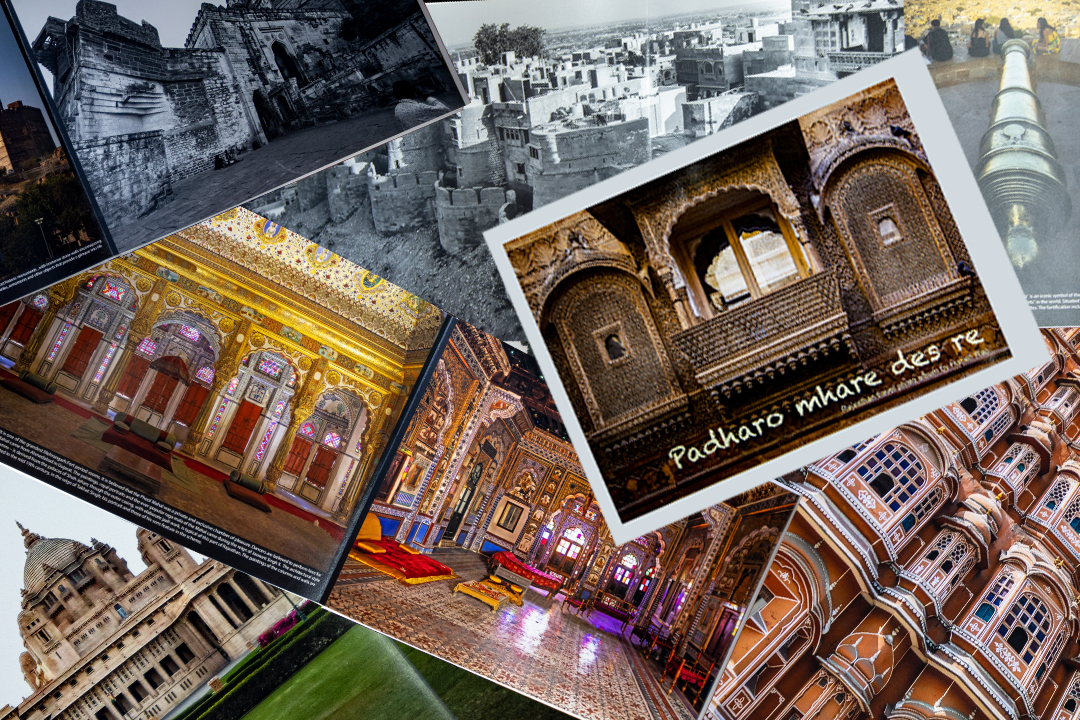
Coffee table book , 14"x10", hard bound
"Padharo mhare des re" ... A coffee table book created using high resolution photographs from my tour to Rajasthan . Professionally printed on high quality thick paper by the famous printer Canvera available in glossy or matte finish. Please contact me through Contact Me page if you are interested in having a copy of this exquisite book. Will be happy to have it printed and shipped to you at printing cost."
If the Rajputs knew how to fight a battle, they also knew how to create an artistic legacy. Rajasthan’s culture is a celebration of chivalry, hardship and beauty, manifested through its literature, poetry, music, dance, painting and architecture. The fabulous citadels of Rajasthan were conceived and built for protection from invading armies but gradually they became more extravagant to realise the lavish and profligate royal whims.
It makes me sad that the vacation came to an end, it also ends the happy days that I enjoyed in the company of the people who are very important to me. The travel made me remember how beautiful life is.
Cheers,


